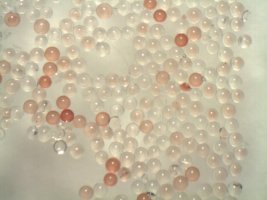Download Form - GDBs
GDB Databases
About
GDB-11 enumerates small organic molecules up to 11 atoms of C, N, O and F following simple chemical stability and synthetic feasibility rules.
GDB-13 enumerates small organic molecules up to 13 atoms of C, N, O, S and Cl following simple chemical stability and synthetic feasibility rules. With 977 468 314 structures, GDB-13 is the largest publicly available small organic molecule database to date.

How to cite
To cite GDB-11, please reference:
Virtual exploration of the chemical universe up to 11 atoms of C, N, O, F: assembly of 26.4 million structures (110.9 million stereoisomers) and analysis for new ring systems, stereochemistry, physico-chemical properties, compound classes and drug discovery. Fink, T.; Reymond, J.-L. J. Chem. Inf. Model. 2007, 47, 342-353.
Virtual Exploration of the Small Molecule Chemical Universe below 160 Daltons. Fink, T.; Bruggesser, H.; Reymond, J.-L. Angew. Chem. Int. Ed. 2005, 44, 1504-1508.
To cite GDB-13, please reference:
970 Million Druglike Small Molecules for Virtual Screening in the Chemical Universe Database GDB-13. Blum L. C.; Reymond J.-L. J. Am. Chem. Soc., 2009, 131, 8732-8733.
To cite GDB-17, please reference:
Enumeration of 166 billion organic small molecules in the chemical universe database GDB-17. Ruddigkeit Lars, van Deursen Ruud, Blum L. C.; Reymond J.-L. J. Chem. Inf. Model., 2012, 52, 2864-2875.
Tagsfree Encoding System for Combinatorial Peptide Libraries
About
TAGSFREE is a program for designing split-and-mix peptide libraries that can be decoded by amino acid analysis. The analysis is independent of peptide topology (linear, branched, cyclic) and amino acid type (natural or non-natural, including beta-amino acids).

How to cite
Any work based on the TAGSFREE method must cite the following publications:
A General Method for Designing Combinatorial Peptide Libraries Decodable by Amino Acid Analysis. Kofoed J.; Reymond J.-L. J. Comb. Chem. 2007, 9, 1046-1052.
Identification of protease substrates by combinatorial profiling on tentagel beads. Kofoed J.; Reymond J.-L. Chem. Commun. 2007, 48, 4453-4455.
Get Access to GDBs and Tagsfree Encoding System
Please fill out this form to download our databases
The credentials will be sent through e-mails.